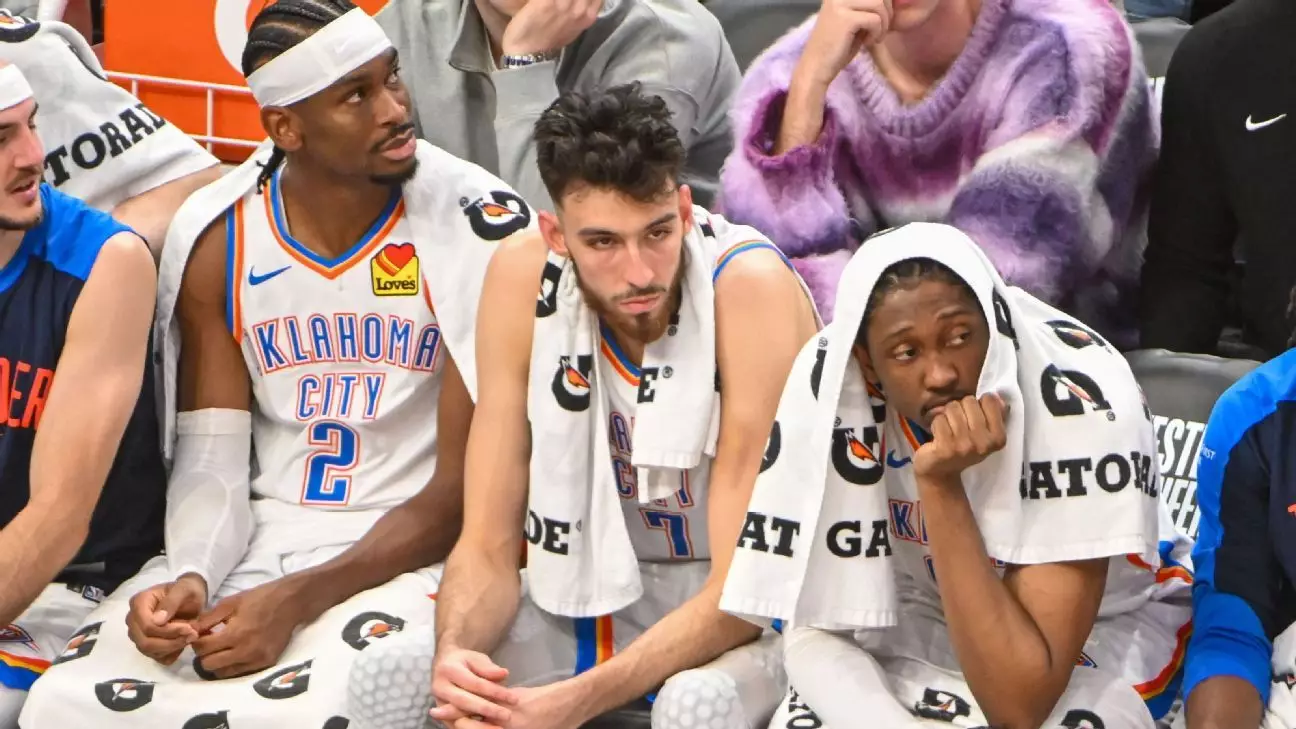The Oklahoma City Thunder faced an unsettling defeat in Game 3 of the Western Conference Finals, marking the most lopsided loss in the storied franchise’s history. After securing victories in the first two games against the Minnesota Timberwolves, the Thunder found themselves overwhelmed, succumbing to a staggering 143-101 debacle. This game has been dissected from various angles, yet at its core, the reasons behind the Thunder’s collapse stem from a fundamental lack of execution and an inability to cope with intensity.
Basketball, while often lauded for its strategic developments, is undeniably a game of physical prowess and mental fortitude. Thunder power forward/center Chet Holmgren aptly captured the essence of the game when he stated, “It’s not complicated. Wherever they wanted to go, they got there.” The Timberwolves established themselves early, dictating the pace and flow of the game, while the Thunder appeared reactive rather than proactive. This erosion of competitive spirit was as shocking as the final scoreline.
The Role of Key Players
Much has been said about the drop in performance by Oklahoma City’s star player, Shai Gilgeous-Alexander, who notched only 14 points, tying with rookie guard Ajay Mitchell for the team lead. This was especially concerning given the MVP’s scoring prowess, averaging an astonishing 34.5 points in the two previous games. The fact that Gilgeous-Alexander finished the game with a meager 4-of-13 shooting record and a worrying four turnovers exemplifies how critical players can sometimes falter under pressure.
Minnesota’s coach, Chris Finch, made a noteworthy observation regarding the defensive efforts of his team, which clearly disrupted the Thunder’s rhythm. “We were more aggressive everywhere,” Finch stated. The Timberwolves managed to limit foul calls, allowing them to maintain a relentless pace and set their defensive alignments effectively. This was exactly the kind of relentless play the Thunder typically thrive against, but they found themselves unable to adapt.
Contrast in Defensive Strategies
On the other side of the court, the Thunder’s usually staunch defense saw an uncharacteristic dip, permitting the Timberwolves a staggering shooting percentage of 57.3% from the field and 50.0% from behind the arc. The disparity in defensive statistics is alarming when considering that Oklahoma City’s defensive prowess has been a cornerstone of their success throughout the season.
The Timberwolves’ duo, Anthony Edwards and Julius Randle, demonstrated clinical efficiency, combining for an impressive 54 points. Their performance served as a mirror reflecting the Thunder’s self-inflicted struggles. The Thunder, typically adept at forcing turnovers and creating havoc, managed only 10 turnovers in this game—the lowest of their postseason run. This lack of defensive vigilance allowed Minnesota to establish a rapid tempo, leaving Oklahoma City in a frustrating cycle of pulling the ball from the net rather than capitalizing on fast-break opportunities.
A Lesson in Competitive Spirit
In sports, adversity is often the best teacher. The Thunder’s recounting of this humiliating defeat should not simply be an epilogue to the series but a foundational guide for reclaiming their competitive edge. Gilgeous-Alexander aptly summarized the ethos required moving forward: “You get punched, you get back up.” This mindset is necessary not just for the next game, but for the entirety of the postseason.
Coach Mark Daigneault’s ability to galvanize his team following such a stunning loss will be put to the test. Historically, teams that respond well to varying levels of adversity often go further than those who wallow in self-doubt. Oklahoma City must confront both the mental and physical dimensions of their game, reassessing their strategies and finding the inner strength to push against the odds in forthcoming battles.
The Oklahoma City Thunder must harness the lessons etched into this painful defeat, channeling their frustrations into the energy needed to rebound. In the face of such adversity, the true mettle of the team will be revealed—not just as competitors, but as resilient warriors ready to fight back.


Leave a Reply